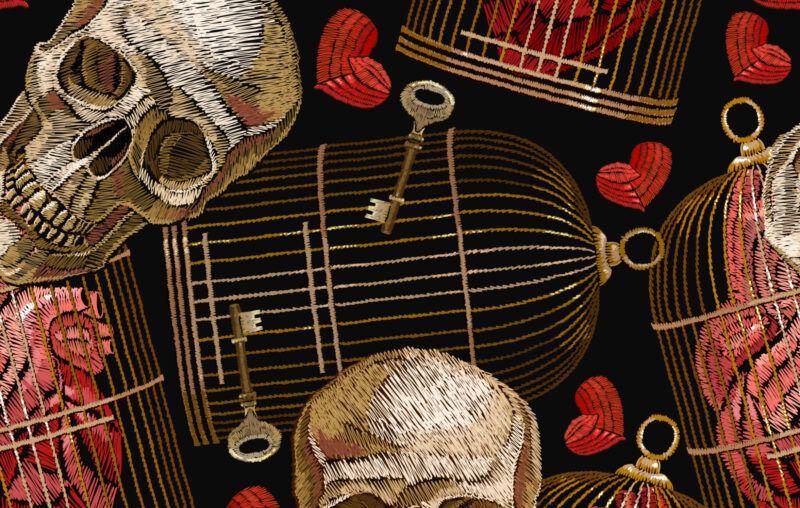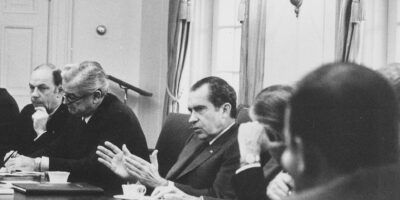We Should Worry about a Permanent Covidocracy

Freedom once surrendered can be hell to claw back.
That’s why I sympathize with those opposing even Covid-19 control measures that have some merit such as masks. Masks can reduce spread by blocking virus that’s attached to droplets, either outgoing or incoming, although they are of little value with the main problem which is fully aerosolized virus. Even for droplets a mask is hardly foolproof, which is why of late the omnipotent Dr. Fauci has told us that double masking “just makes common sense” (before pointing out that there’s no data to support that claim) while others now urge triple masking. Can a plastic bag be far behind?
Further, masking is usually just part of a wider package of measures such as curfews (the virus spreads more easily at night, you see) and represent the controversial strategy of focusing not on the ill but the healthy.
But what about those surrendered liberties? Herewith a couple of examples in which we find that, mirabile dictu, regulators love to regulate for the sheer sake of it and will not stop until the public seriously fights back.
The Double Nickel
In early 1974, Washington bypassed the federal system in establishing a national speed limit of 55 miles per hour (labeled the “double nickel”). States that flouted it were threatened with a cutoff of federal highway funds, never mind that they contributed to those funds. The double nickel began after the OPEC Persian Gulf states raised their prices by 70 percent and embargoed oil to countries that had supported Israel in the Six-Day War. (The lines some of us remember, though, weren’t caused by high prices but rather rationing at state, city, and even the gas station level.)
It had physics on its side in that above a speed where a vehicle burns fuel most efficiently, wind drag cuts mileage. But the gasoline savings proved miniscule, between 0.2%-1% according to the National Research Council.
Meanwhile, the previous state and local speed limits were a classic example of the benefits of federalism, in that for a tiny highly-populated area like Rhode Island it wasn’t particularly onerous but in much larger, mostly “empty,” states it would tremendously lengthen a trip. I have driven all the way across one such state, Texas, on several occasions and usually kept the speedometer needle at 55 – times two. There are rarely other vehicles and Texas scenery comprises wind farms erected in the middle of nowhere only to collect subsidies.
The oil embargo lasted fewer than six months, and indeed was lifted shortly after the double nickel was passed. Yet it wasn’t until 1987 that Congress raised the national speed limit to 65 and 1995 that the national speed limit was repealed – more than two decades after the instigating crisis.
On what grounds? Basically Newton’s Law of Inertia. Instead of changing the legislation, the reason was changed. Now the double nickel was promoted as “55 Saves Lives!” Again, there was a certain logic in that slower vehicles cause less impact and theoretically allow drivers more time to react. Reputable studies have shown a correlation between high speeds and more accidents with more serious consequences.
But there were also countervailing factors, such as that vehicle passing is extraordinarily dangerous and by ignoring the “natural impulses” of drivers who determine their speed based on road and weather conditions, the double-nickel encouraged those uncomfortable with 55 to pass those intent on obeying the law. Further, in the very areas where people wanted to drive fastest there was essentially nothing to run into. Certainly, there was a terrible economic cost in lost time not just to truckers but everyday drivers and their passengers.
Finally, in an argument reflected in some of the considerations about Covid-19 lockdowns, if safety were our only concern then why not set speed limits at far lower than 55? Society clearly puts some economic considerations ahead of maximizing lifespans. It does not apply the rule of “if it saves just one life.”
From early on states were pushing back, with many giving only minor fines and no points to speed limit violators and as many of us saw personally almost nobody stuck to the limit. Finally, Congress gave in. Again, 21 years later.
British “Wartime” Food Rationing and Free Speech Restrictions
Rationing was common in many countries in both world wars, in part because of the threat of interdicted shipping and in part because of loss of sources of food and vital materials due to enemy occupation. Also it was a way of bringing civilians into the war effort. Does “We’re all in this together” ring a bell?
Beginning in 1940, German U-boats wreaked havoc on vital British imports. But by 1943 with the convoy system and air support from both sides of the ocean leaving only a gap in the very middle, the back of U-boat interdiction was broken. So that’s when rationing was eliminated or cut back right? Or at least after the war ended, right?
Wrong. Newton struck again. The Ministry of Food had determined it could better distribute food than the free market, that it could be more “fair.” Yet of course the rich were able to buy anything available on the black market so rationing was inherently unfair. The Ministry kept adding more foods and other commodities to the list including paper and clothing. Socialist George Orwell complained it was hard to get a book printed. When the Labour Party took over in 1945 it was only too eager to micromanage consumption and bread was rationed only after the war, in July 1946.
“It was not until the early 1950s that most commodities came ‘off the ration.’ Meat was the last item to be de-rationed and food rationing ended completely in 1954,” according to the Imperial War Museums Website. So “wartime rationing” was essentially one-third during war, two-thirds in peacetime. And while the Tories finally ended peacetime rationing, even they waited a few years to do so. Again, the public had to make it clear that enough was enough. Or perhaps the other way around, they weren’t getting enough. Meanwhile rationing in West Germany ended in 1950 . . .
Are there indications we may see a repeat of such actions for Covid-19? Absolutely. There are already untold articles about how even vaccinated people must continue wearing masks and maintain “social distancing,” while others urge that masking continue indefinitely as is allegedly done in Asia. No, such masking was heretofore common in just a few Asian countries and then was usually voluntary on the part of sick people. That is, if you’re coughing or sneezing and don’t suspect allergies, you mask up. If prior to the Covid-19 outbreak you saw a mask on healthy Asians, it was because some Asian cities suffer terrible air pollution.
The Philippines where I live has suffered the longest lockdown in the world and there’s no hint as to when, if ever, it will be lifted. It flipped instantly from a shaky democracy to a full Covidocracy and the citizens, who are actually fairly comfortable with authoritarianism, called “democracy fatigue,” seem resigned that it may never flip back.
In my city of Cebu (population of about one million) masks were ordered last March and accompanied by quarantine passes permitting travel only three days a week, plus a curfew. Those under 20 and over 60 were forbidden from going out, and no explanation was given for any of these measures. (Is the virus more powerful at night?)
Armed soldiers accompanied by armored personnel carriers arrived from all over the country to enforce the rules. This was followed by ordering the completion of contact tracing forms (admittedly thrown out at the end of the night) and the wearing of plastic shields inside buildings (admittedly usually immediately flipped up after doing so.) Yet even as ICU units remain almost empty, few restrictions have been lifted. Those under 15 and over 65 remain unable to legally exit their homes, with President Rodrigo Duterte overruling his own task force in light of “the new variant.” Meanwhile, the police are lobbying for extending curfew hours. The police?
The hard and endless lockdown has crushed the Filipino economy worse than any other Asian country. And yet there’s no end in sight. “Duterte Vows PH ‘Back To Normal’ by December,” was the headline of a Filipino newspaper last July. Now it’s next December. There’s no vaccine and no vaccination plan. Yet the laws could be repealed tomorrow and it might not make much difference, in that the people have been absolutely terrified.
That’s on the extreme side, but certainly the Western Covidocracies born last March, like all biological entities, are going to want to perpetuate themselves and will be supported by the click-desperate media. Just as somehow “15 days to flatten the curve” became indefinite, the media are clearly preparing us for permanence regarding masking and anti-social distancing. After all, not only will Covid not disappear but we can expect even more variants. Besides, we’re told, masks are reducing flu and cold transmission. (No, nobody keeps data on colds.) The “save one life” standard is pretty easy to reach, and even without mandates who wants to be seen as selfish?
Bill Buckley once said, “A liberal is someone who is determined to reach into your shower and adjust the water temperature for you.” That’s probably true of all persons given the power to reach into your shower. We either set firm goalposts now – when do the masks come off; when does the distancing end; when do kids return to school and restaurants operate at enough capacity to stay in business – or we risk many years of control.










